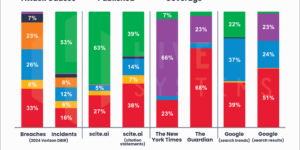The El Nino that has dominated global weather for more than a year has ended and may give way by the end of 2016 to a weak or moderate La Nina that can dry up crops in Brazil, soak them with rains in Malaysia and trigger more Atlantic hurricanes.
There’s a 75 percent chance La Nina conditions will develop during the fall and winter, the U.S. Climate Prediction Center in College Park, Maryland, said Thursday. Australia’s Bureau of Meteorology says the odds are about 50 percent. The cycles occur every two or three years on average and may help regulate the Earth’s temperature.
While El Nino has dried up rice crops across Southeast Asia, cocoa fields in Ghana and sugar cane in Thailand, La Nina holds its own challenges for farmers. It has brought drought to southern Brazil, a major soybean producer, and heavy rain to Malaysia, which can make it difficult to harvest the palm oil crop. Parts of the U.S. may see a cooler winter and a boost in natural gas demand while floods in Australia may cut coal output.
“Many models favor La Nina by the Northern Hemisphere’s fall,” the climate center said in a monthly advisory. “However, most dynamical models indicate La Nina onset as soon as the Northern Hemisphere summer, which is slightly favored by forecaster consensus.”
Many seasonal Atlantic hurricane forecasts predicted more tropical systems in the basin this year than in 2015, in part because El Nino has faded and a La Nina is possible. As with El Nino, the strength of the event can often determine its severity.
Heat Records
“At this time, forecasters are leaning toward a weak or borderline moderate La Nina if an event were to form,” according to the statement.
The U.S. declared El Nino under way in March 2015 and the Australian Bureau of Meteorology followed in May of the same year. Australia pronounced El Nino dead last month. The U.S. confirmed Thursday, declaring that the equatorial Pacific’s surface has cooled from its El Nino state.
The ebbing El Nino was one of the three strongest on record, generating the hottest global temperatures in more than 130 years, according to the U.S. National Centers for Environmental Information in Asheville, North Carolina. April marked the 12th consecutive month to set a record.




















 Four P/C Insurers Are ‘AI Titans’; AI Impact Leaders Revealed: Research
Four P/C Insurers Are ‘AI Titans’; AI Impact Leaders Revealed: Research  California Vocational School CEO Charged With 23 Counts of Insurance Fraud
California Vocational School CEO Charged With 23 Counts of Insurance Fraud  Mixed Bag: What Trump 2.0 Tariffs, DOGE Activities Mean For Insurers
Mixed Bag: What Trump 2.0 Tariffs, DOGE Activities Mean For Insurers  Insurance Carrier Employees Are Bored; Most Boring Rankings Published
Insurance Carrier Employees Are Bored; Most Boring Rankings Published 







